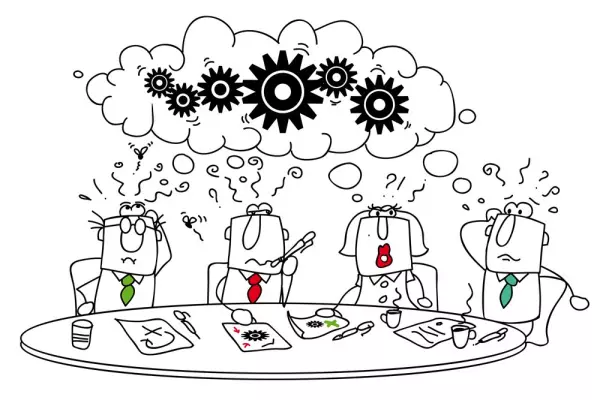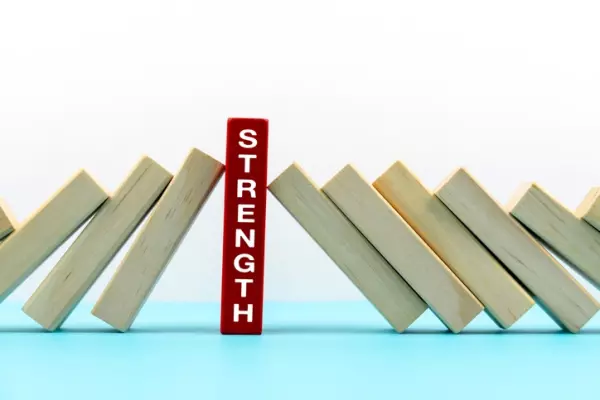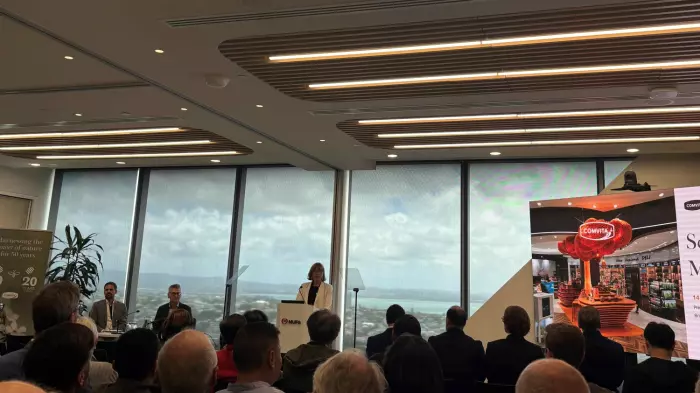We're drowning in meetings. They consume our calendars and our energy. More than 70% of these gatherings are considered by participants to be unproductive, gobbling up 24 billion hours a year in the United States alone, according to a survey by scheduling platform Doodle.
It's clear there's a big problem in the way we’re coming together to collaborate.
The solution lies in good facilitation. Just as organisations need effective leadership, clear purpose and live troubleshooting, so do meetings. But skilful facilitation doesn't happen by accident – it’s considered, practised and precise.
Be clear on why
Having a set purpose – one that's specific about what you want to achieve and accomplish – is key to effective facilitation. It gives leaders and attendees a goal to work towards.
Purpose serves as an anchor for decision-making. In her book The Art of Gathering, Priya Parker calls it “a tool to help filter the details of what’s required of a gathering”.
Your purpose is your bouncer at the door. It lets you know what does and doesn’t fit at your particular event.
- Who should be involved?
- What activities should take place?
- How should the meeting adapt when things don’t go according to plan?
When the team understands the purpose of a meeting or gathering, members can engage (and prepare) more meaningfully.
Preparation and design
Effective facilitation begins long before anyone even steps into the room.
It's in the careful preparation that facilitators arm themselves not just with facts but with a solid understanding of the purpose, participants and dynamics that might unfold.
If the session feels easy, it’s usually because the preparation has been exceptional.
Author David Ehrlichman says if facilitation brings a meeting to life, design is its skeleton. Carefully plan, organise and consider the team's needs and goals.
Be intentional about pacing and cadence, and pre-select the right tools and methodologies to serve the purpose.
Each element should be chosen to ensure a cohesive, productive flow that best meets the team's needs. These elements might include:
- Activities encouraging the group to chat.
- Exercises allow everyone to write down their thoughts and ideas in silence.
- Playful moments of co-creation, where participants can use their hands.
- Breaks that give options to stay and engage or retreat and re-energise.
- Time-boxed discussions and activities to keep the momentum going.
Think about the amount of work and discussion you expect from the team. What's reasonable, and what's exhausting? How many activities are too many?
To craft effective experiences, it's vital to consider these questions. Focus on what’s essential rather than overloading the meeting with unnecessary complexity.
Consider your guest list
A common misconception is that being inclusive means involving everyone all the time. However, optimal inclusion sometimes means that you deliberately exclude some participants. This doesn’t mean sidelining individuals but instead knowing when and where you'll get the most out of them taking part.
Inclusivity goes beyond just who’s in the room. It’s also about creating a psychologically safe environment where everyone feels comfortable sharing their thoughts and ideas. This is easier when the right people, who are connected to and committed to the purpose, are involved.
Call on all voices
The most effective facilitators don’t hoard power but distribute it, creating an atmosphere where everyone feels their input is valued and vital.
Allocate the first few minutes of your session for team members to suggest items for the agenda, using the purpose as your guardrails. This sense of shared ownership and accountability enriches the conversation and gives everyone a stake in the meeting from the start.
The best facilitators don't give all the answers but ask the right questions. They cultivate an environment where open-ended questions spark critical thinking and encourage dialogue rich with diverse perspectives.
Listen actively and with empathy, showing you have a genuine respect for team members' ideas and fostering a brave space for innovation and honesty.
The responsibility for clarity lies with the facilitator.
One simple language shift is to move from asking, “Did you understand that?” to “Is there anything I can further clarify or better explain?”
This subtle shift puts the responsibility of understanding back on the facilitator, where it should be, rather than on the participants.
Be adaptable
Having a plan is great, but sticking rigidly to that plan in the face of shifting dynamics is dangerous. Being adaptive is a balancing act between sticking to strategy and knowing when to pivot. Allow the group enough time to move at its own pace, but know when to steer members toward the main objective. This interplay between flexibility and firmness, plus effective time management, may seem like an art, but it’s actually a craft, and you'll get better with experience and practice.
How you say goodbye matters
Close with a closing and encourage team members to look back on what they learned in the meeting. Perhaps ask them to share how they’re going to reenter the world with the new information they have. Connect the gathering back to the daily lives of those taking part. How can you ensure attendees take a piece of the event back to work with them?
Skilful facilitation can turn the drudgery of meetings into workshops of collective wisdom and action. Let's stop meeting for the sake of meeting and start gathering for the sake of achieving.
Try your skills elsewhere
The art of facilitation extends beyond workplace meetings. I draw on these principles when I'm facilitating everything from workshops to design sprints and team-building exercises to strategy sessions. Whenever we meet, regardless of the setting, purposeful facilitation leads to productive collaboration.
Every gathering is an opportunity — to connect, innovate, and transform. But it won’t happen organically. Unlock your organisation’s wasted potential.













